Removal Procedure
- Remove rear weatherstripping from cowl area.
- Remove windshield wiper arm nut cap.
- Remove windshield wiper arm nut.
- Remove lower windshield molding to provide access to remove air inlet grill panel.
- Remove air inlet grill.
- Remove windshield "A" pillar moldings by firmly pulling out and rocking back and forth to unsnap clips.
- Remove upper windshield to roof molding by pulling from one side to another and discard.
- Remove rear view mirror by loosening screw.
- Disconnect wire from mirror (if equipped).
- Cover instrument panel upper dash panel and defroster ducts with blanket or cloth.
- Install duct tape along roof to protect from cutting tool during windshield removal.
- Using power glass removal tool, cut urethane seal along roof, "A" pillars, and front of dash.
- With aid of a helper, remove glass.

Caution: Always wear heavy gloves and safety glasses when handling glass to minimize the risk of injury.
Notice: Place protective covers on body to prevent paint damage.
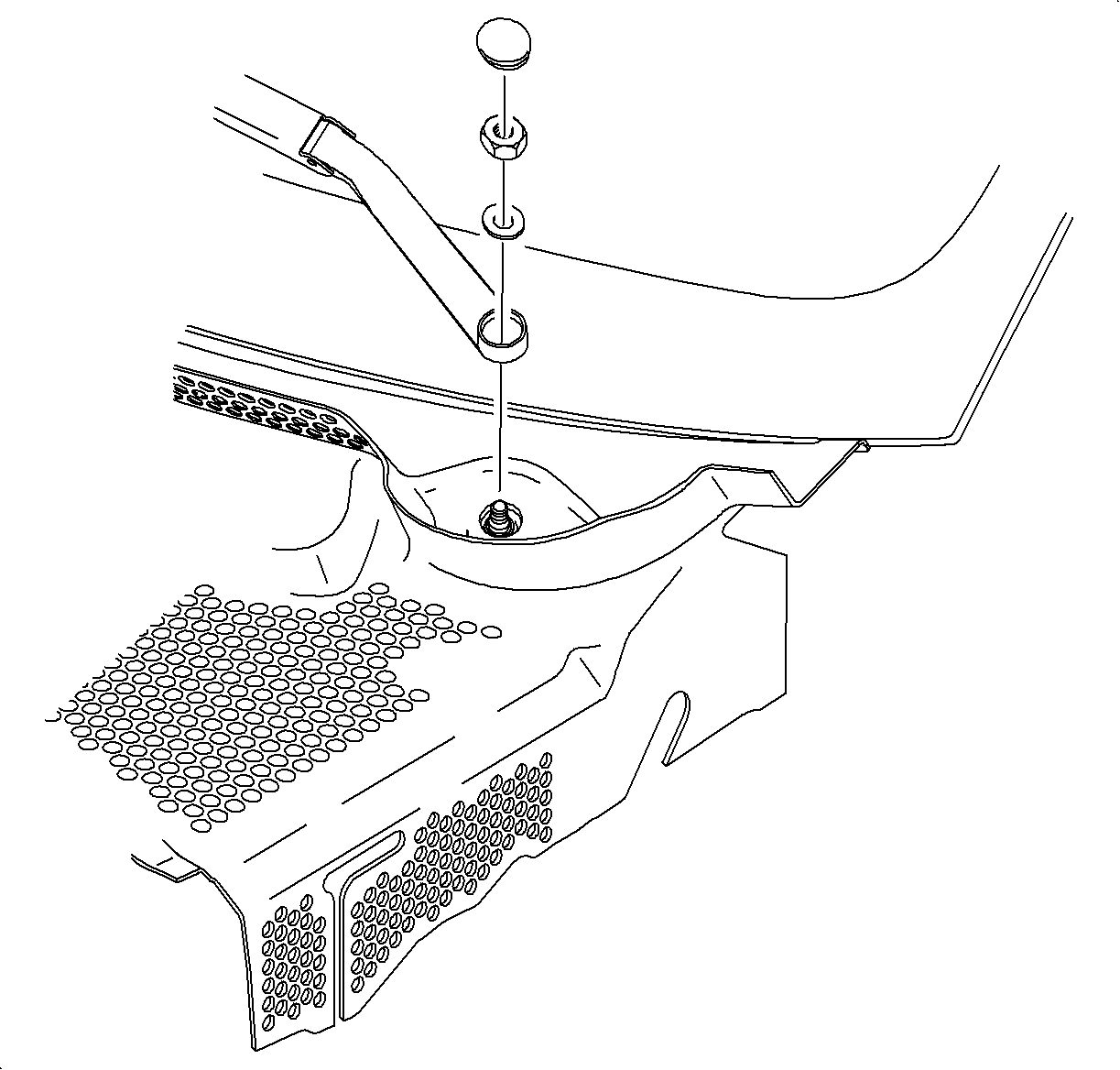

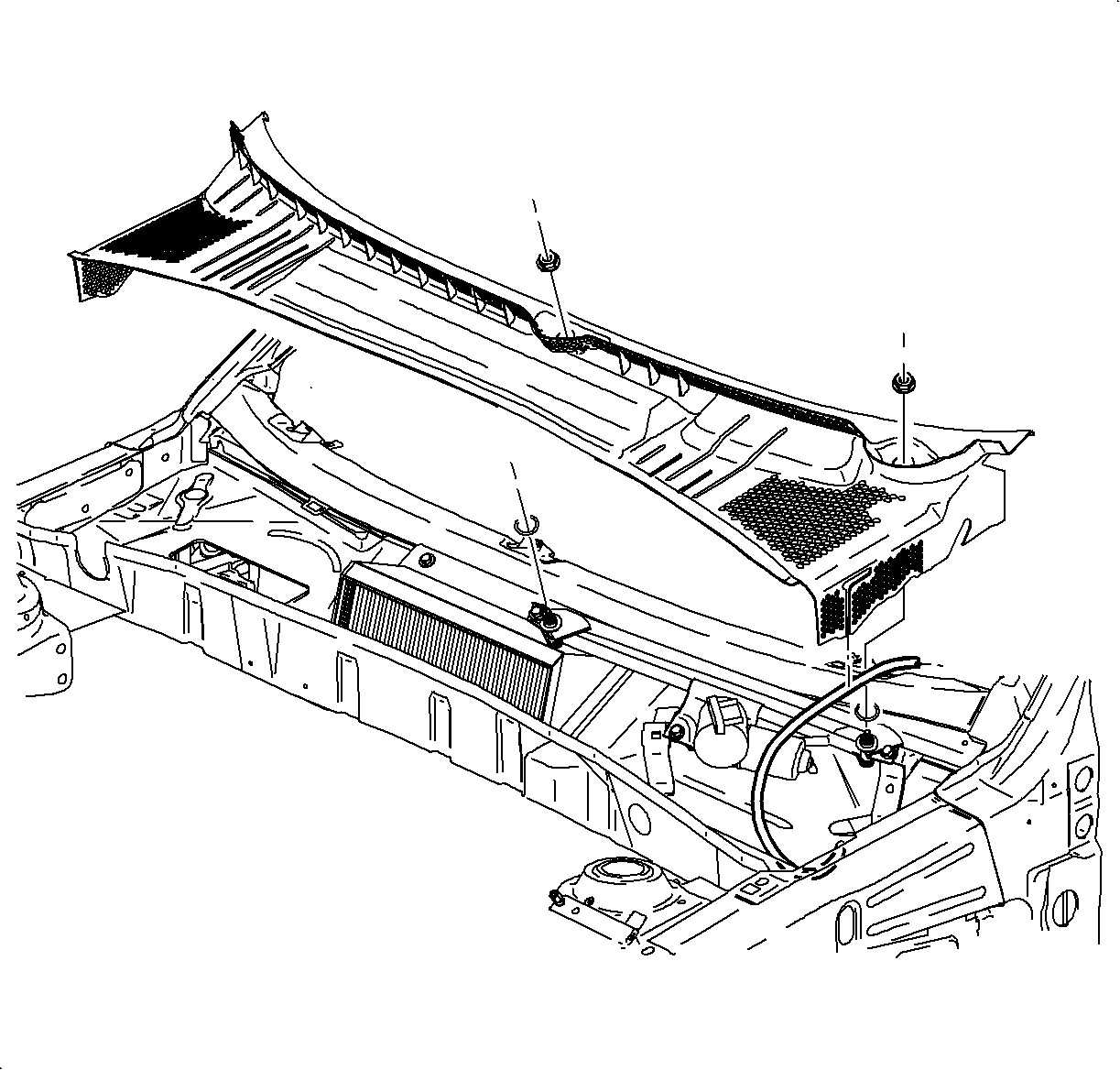

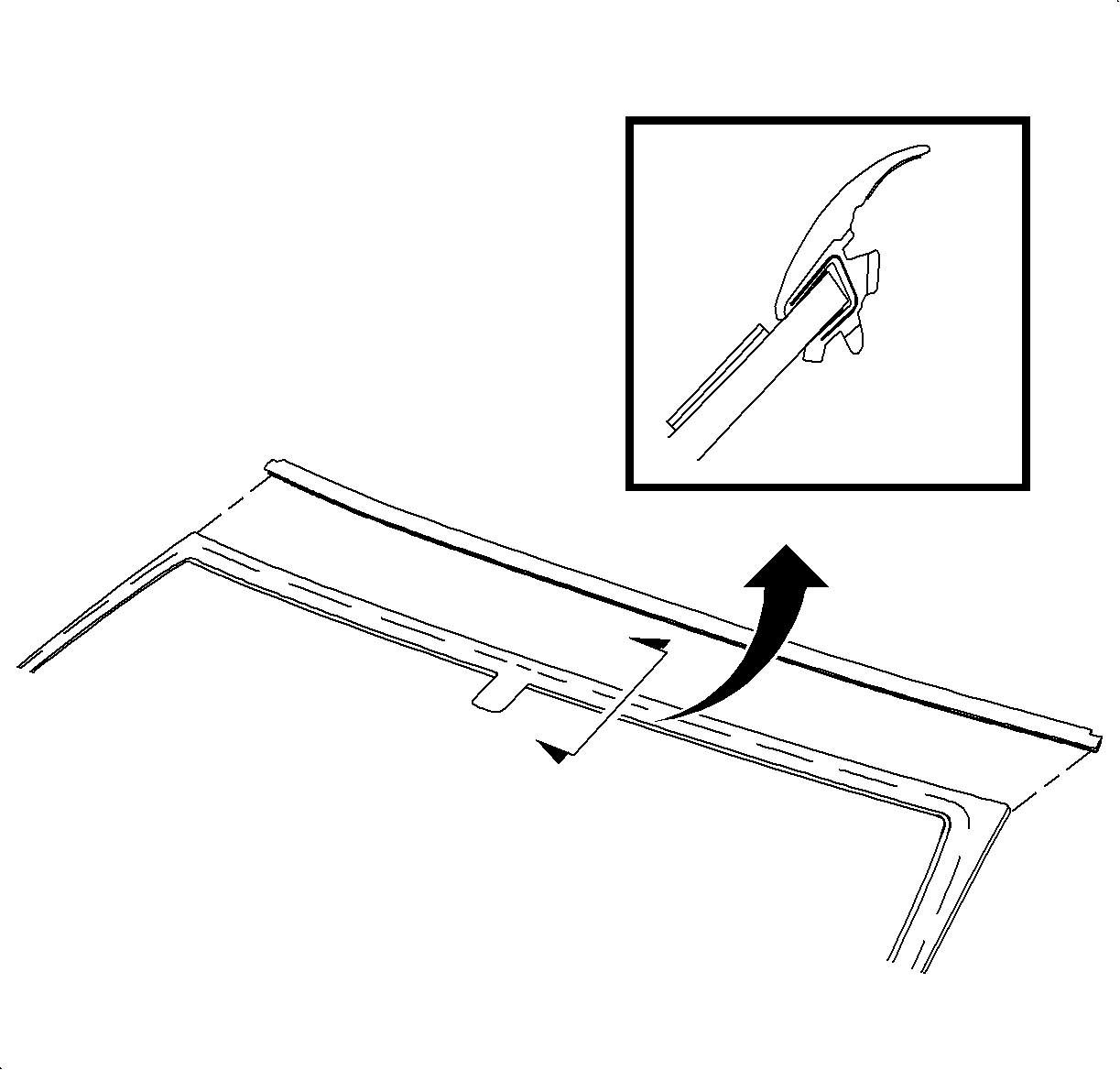
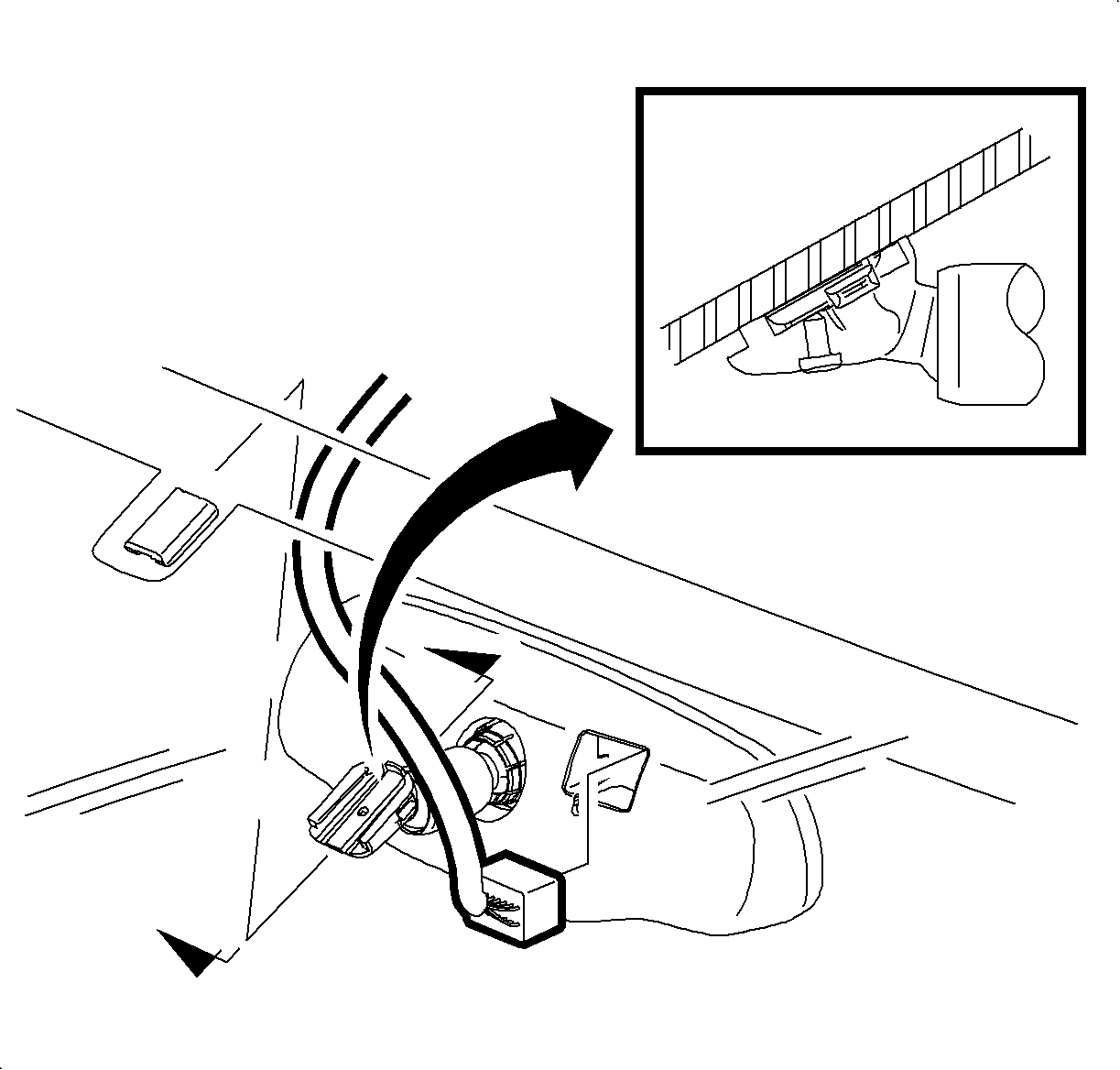
Caution: If broken glass falls into defroster outlets, it can be blown into the passenger compartment and cause injuries. To help avoid personal injury, cover the defroster outlets before replacing windows.
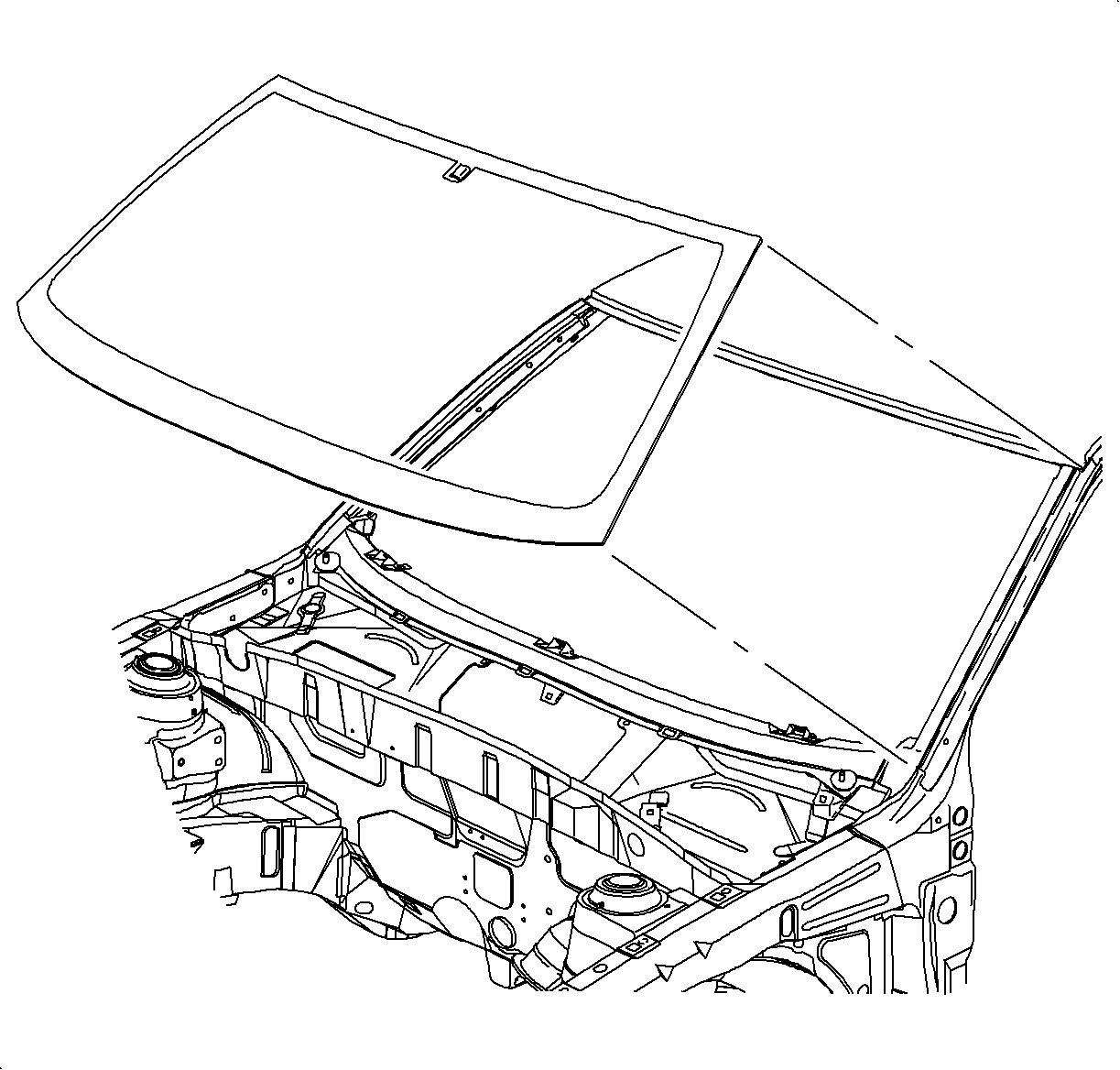
Installation Procedure
- Clean old sealer from body pinch weld area using a razor knife. Leave a thin film - approximately 1-2 mm (0.04-0.08 in) around the perimeter of the window opening and windshield (if being reused).
- Clean entire window opening and glass bonding surfaces with a clean lint-free, alcohol dampened cloth.
- For new windshield only - Apply glass prep primer (Clear #1) around the entire perimeter of glass using dauber. Wipe dry with a clean lint-free cloth.
- With a new dauber apply glass prep primer (Black #2) around the entire perimeter over (Clear #1). Allow primer to dry five minutes before applying urethane.
- Install upper windshield molding.
- Install lower windshield molding retainer.
- Test fit windshield and install tape in four locations around windshield and body, then draw alignment marks on tape to assist in alignment during installation.
- Remove windshield.
- Apply a smooth bead of urethane directly to the old urethane adhesive in the pinchweld area on the body or to the glass. Apply according to the dimensions below:
- With the aid of a helper, lift glass into window opening and align previously made marks on windshield and body. Make certain the lip of the applied molding laps over the roof feature line.
- Adjust windshield using locating cams on front of dash.
- Press firmly to wet-out and set adhesive. Use care to avoid excessive squeeze-out which would cause an appearance problem.
- Apply tape from windshield to roof panel to hold in position until urethane adhesive is cured.
- Water test the vehicle at once using a soft spray. Use warm or hot water if available. Do not direct a hard stream of water on fresh adhesive material. Water applied on top of urethane adhesive, either during water test, or as part of a separate operation will speed up the cure of the adhesive.
- Inspect for leaks from inside the vehicle. Paddle in extra adhesive at leak points using a tongue depressor or similar flat flexible tool.
- Install new windshield "A" pillar moldings and snap in place.
- Orient weatherstrip as shown in figure such that short lip on weather-stripping rests on "A" pillar and long lip rests on windshield.
- Install air inlet grill panel and nuts.
- Install rear view mirror (slide down towards dash) and tighten screw.
- Install electrical connection to mirror (if equipped).
- Install rear hood weatherstrip.
- Install windshield wiper arm, washer, and nut.
- Install windshield wiper arm nut cap.
- Remove blanket or cloth carefully from instrument panel upper dash panel and defroster ducts.
Important: Loose urethane and/or a rough surface on remaining urethane may cause sealing problems during installation.
Notice: To prevent corrosion, paint damage around the window opening by the power glass removal tool must be covered with pinchweld primer. Do not prime over existing urethane. Follow manufacturers recommendations for drying time.
Important: Shake glass prep primer (Clear #1) well before applying.
Primer Area
Minimum Width, A: 18 mm (0.71 in)
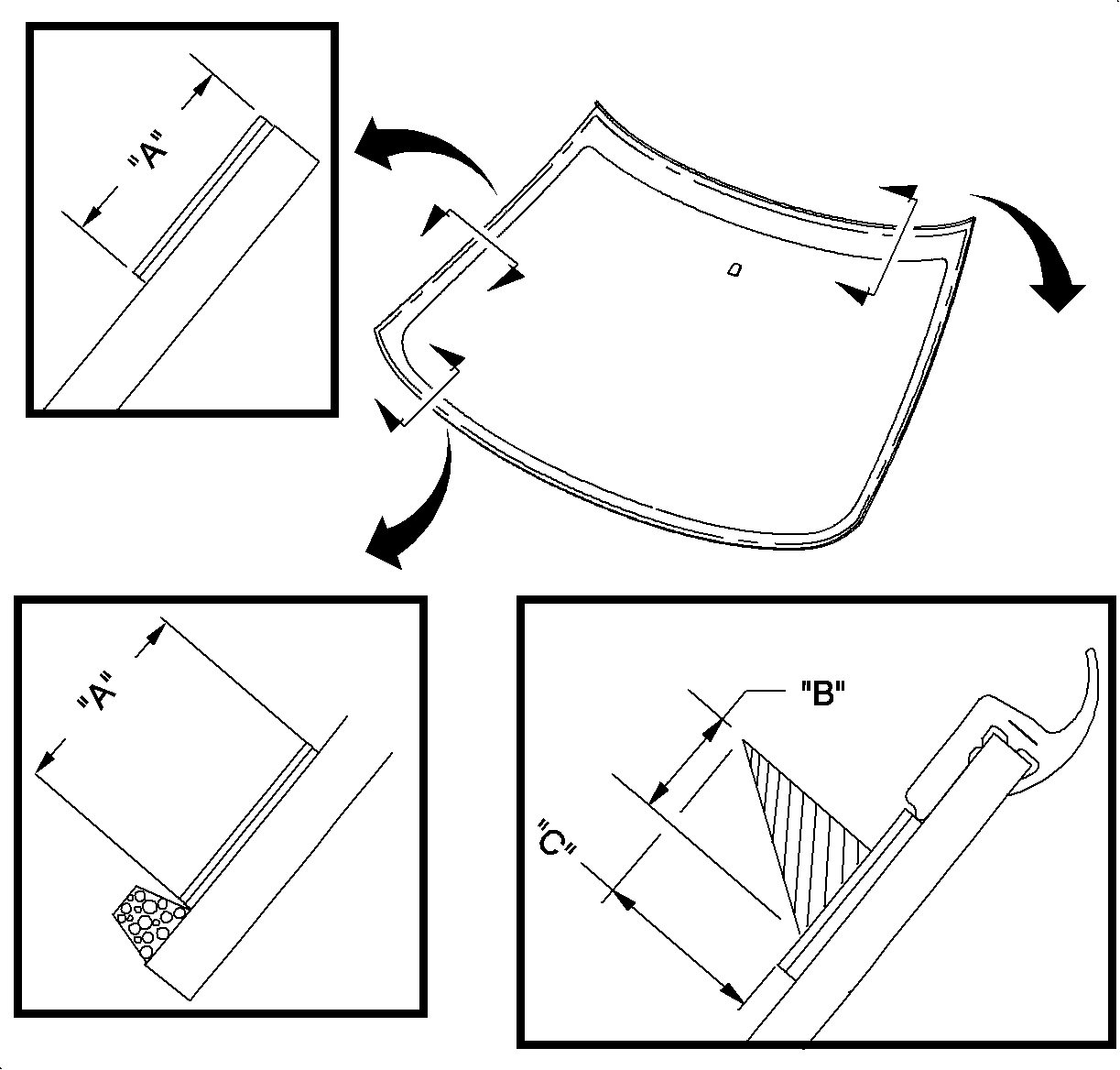
Important: Shake glass primer (Black #2) well before applying.
Primer Area
Minimum Width, A: 18 mm (0.71 in)
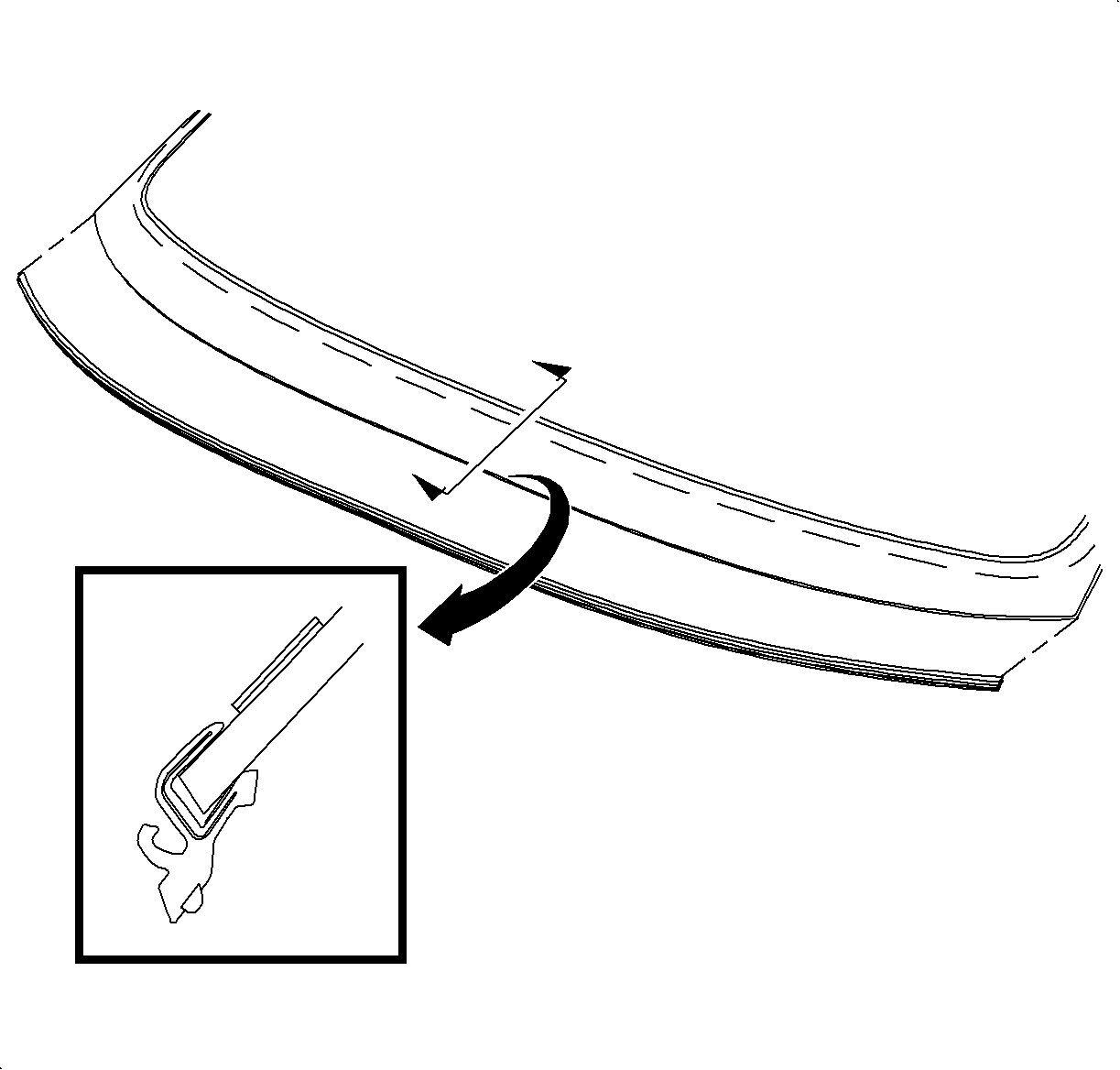

Bead Dimensions
| • | Minimum Width, B: 8 mm (0.31 in) |
| • | Minimum Height, C: 14 mm (0.55 in) |


Notice: Until the new urethane has cured, air pressure from a closing door may cause the glass to move. To prevent this, lower the opposite side door window a minimum of 76 mm (3 in) before closing the door.




Tighten
Tighten air inlet grill panel nuts to 1 N·m (9 lb in).

Tighten
Tighten the rear view mirror screw to 4 N·m (35 lb in).


Tighten
Tighten windshield wiper arm nut to 12 N·m (9 lb ft).
Important: Vehicle must remain at normal room temperature for 6 hours to complete proper cure of adhesive. Refer to manufacturer's recommendation.
